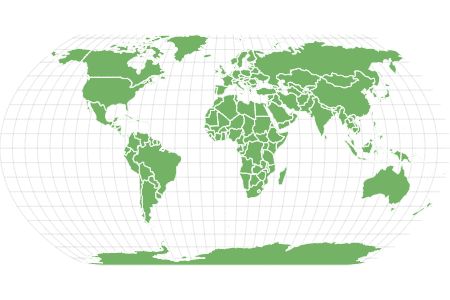Dolphin
Dolphins can travel in superpods of more than 1,000 individuals!
Advertisement
Dolphin Scientific Classification
Read our Complete Guide to Classification of Animals.
Dolphin Conservation Status
Dolphin Facts
- Main Prey
- Fish, Squid, Crustaceans
- Group Behavior
- Pod
- Fun Fact
- Dolphins can travel in superpods of more than 1,000 individuals!
- Distinctive Feature
- A beaklike snout and rounded "melon" or forehead
- Habitat
- All of the world's oceans, rivers in Asia and South America
- Predators
- Sharks, orcas
- Diet
- Carnivore
- Average Litter Size
- 1
- Lifestyle
- Pod
- Favorite Food
- Squid
- Type
- Mammal
- Slogan
- Can reach speeds of up to 25 mph!
View all of the Dolphin images!
Along with tigers and elephants, dolphins are often listed when someone asks, “What is your favorite animal?”
Many people have become familiar with the playful antics of dolphins through films like Flipper and Dolphin Tale. But there is much more to these animals and their behavior! Keep reading to learn more facts about these amazing animals.
5 Amazing Dolphin Facts!
- These animals are social and typically live in groups called pods. Most pods have up to 30 individuals, but superpods of more than 1,000 dolphins have been observed!
- Not all of them live in ocean habitats. There are a few remaining species of river dolphins – one of them is pink in color!
- They have been known to help or protect humans, often by scaring away sharks.
- Beginning in the 1960s, these animals were trained for military purposes such as locating and collecting lost objects, delivering items to divers, guarding vessels, or holding a surveillance camera in their mouths. The program ended in the 1990s, and some of the retired animals began working with children as therapy animals.
- These animals show self-awareness in that they are able to recognize themselves and experience individuality. Only a few animals – apes, elephants, dolphins, and toothed whales – demonstrate this trait.

Where to Find Dolphins
These animals can be found in all of the world’s oceans, and they are especially prominent in coastal areas. Five species live in brackish habitats or freshwater river systems in South America or Asia.
Scientific Names
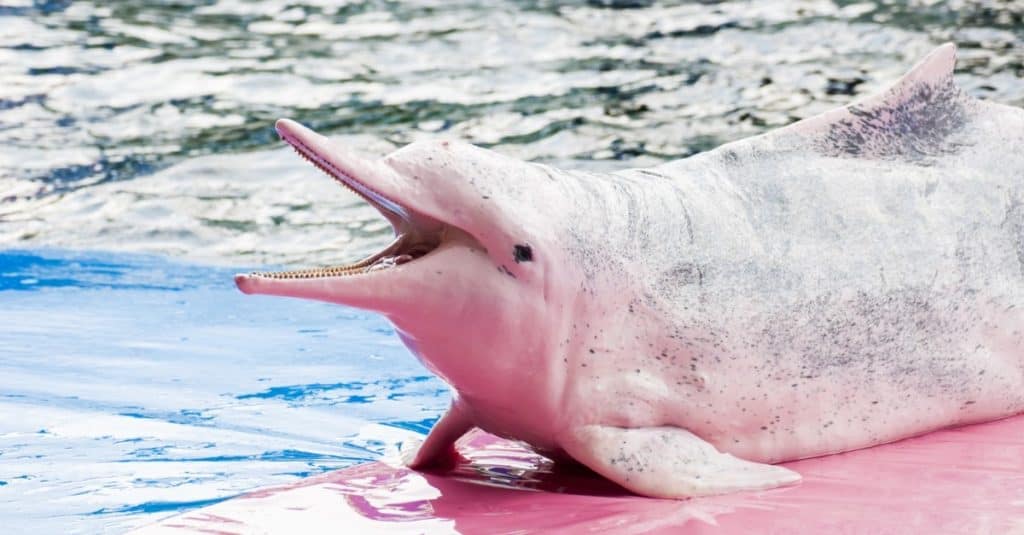
There are 43 extant species of dolphin
©wasanajai/Shutterstock.com
The common name “dolphin” comes from the Greek delphis, meaning “womb.” Even these ancient observers realized dolphins’ classification as mammals, or animals with a womb. Oceanic species, along with their scientific names, are as follows:
- Australian snubfin -, Orcaella heinsohni
- Irrawaddy -, Orcaella brevirostris
- La Plata -, Pontoporia blainvillei
- Long-beaked common -, Delphinus capensis
- Short-beaked common -, Delphinus delphis
- Common bottlenose –, Tursiops truncatus
- Indo-Pacific bottlenose -, Tursiops aduncus
- Burrunan -, Tursiops australis
- Northern right whale -, Lissodelphis borealis
- Southern right whale dolsphin, Lissodelphis peronii
- Costero, Sotalia guianensis
- Indo-Pacific humpback -, Sousa chinensis
- Atlantic humpback -, Sousa teuszii
- Atlantic spotted -, Stenella frontalis
- Clymene -, Stenella clymene
- Pacific white-sided -, Lagenorhynchus obliquidens
- Pantropical spotted -, Stenella attenuata
- Peale’s -, Lagenorhynchus australis
- Spinner -, Stenella longirostris
- Striped -, Stenella coeruleoalba
- Rough-toothed -, Steno bredanensis
- Chilean -, Cephalorhynchus eutropia
- Commerson’s -, Cephalorhynchus commersonii
- Haviside’s -, Cephalorhynchus heavisidii
- Hector’s -, Cephalorhynchus hectori
- Risso’s -, Grampus griseus
- Fraser’s dol-phin, Lagenodelphis hosei
- Atlantic white-sided -, Lagenorhynchus acutus
- Dusky –, Lagenorhynchus obscurus
- Pacific white-sided -, Lagenorhynchus obliquidens
- Hourglass -, Lagenorhynchus cruciger
- White-beaked dolphin, Lagenorhynchus albirostris
There are also a number of small “whales” that are genetically in the same classification as dolphins:
- Killer whale or orca, Orcinus orca
- Pygmy killer whale, Feresa attenuata
- False killer whale, Pseudorca crassidens
- Long-finned pilot whale, Globicephala melas
- Melon-headed whale, Peponocephala electra
River dolphin common and scientific names are as follows:
- Baiji, Lipotes vexillifer
- South Asian river dolphin, Platanista gangetica
- Amazon river dolphin, Inia geoffrensis
- Araguaian river dolphin, Inia araguaiaensis
- Bolivian river dolphin,Inia boliviensis
- Tucuxi, Sotalia fluviatilis
Evolution
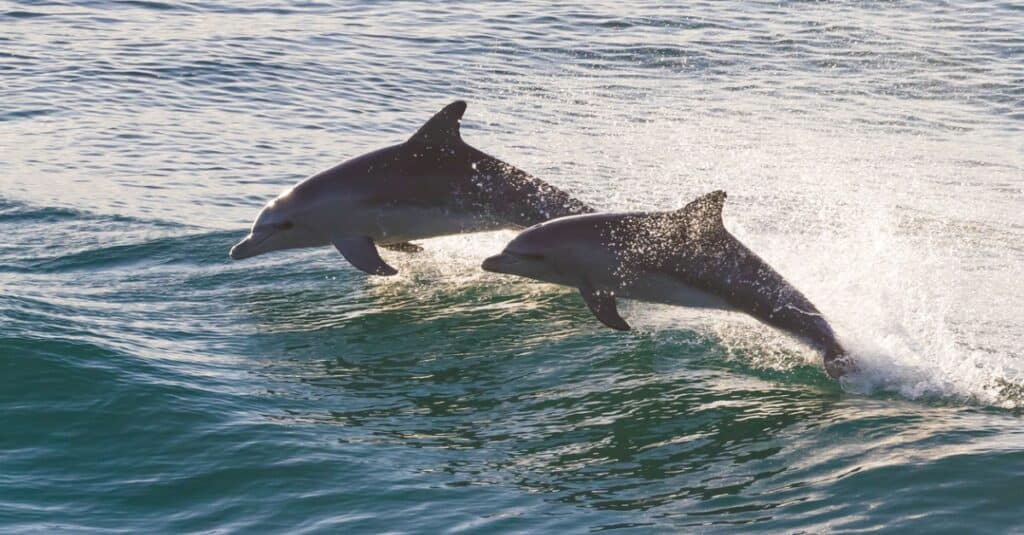
Dolphins are hippos’ distant relatives, having separated fully from them about 40 million years ago
©Sally Hinton/Shutterstock.com
Dolphins’ earliest ancestors were terrestrial ungulates. Sixty million years ago, one of their ancestors which was also the ancestor of the hippo diverged from the main evolutionary branch at the time. Their distant forbears however, first began to associate with the sea approximately 49 million years ago and about 1 million years later, another separation occurred from a bovid-like ungulate, known as the Indohyus. The full separation between dolphins and hippos occurred 40 million years ago as a result of their common evolutionary pathway branching into cetacea and anthracotheres.
Between 34 – 39 million years ago, their transformation from aquatic to terrestrial mammals was complete.
The lineage of the anthracotheres would become extinct, 37 million years later, leaving only one line which would provide the modern hippos.
Size, Appearance, & Behavior

©Sergey Uryadnikov/Shutterstock.com
Maui’s dolphin is the smallest, with a length of 1.7 meters (5 ft 7 inches) and a weight of 50 kg (110 lbs). The largest is the killer whale, weighing in at 10 tons and reaching 9.5 meters (31 ft) in length.
Most people visualize them as grey in color, but many have blocks of black, white, or even yellow. Some are speckled. One species of river dolphin is even pale pink.
These are communicative social animals that live in groups called pods.
Migration
Some species migrate when the water temperature changes or in order to follow food sources.
Diet
These animals are carnivores.
What Do Dolphins Eat?
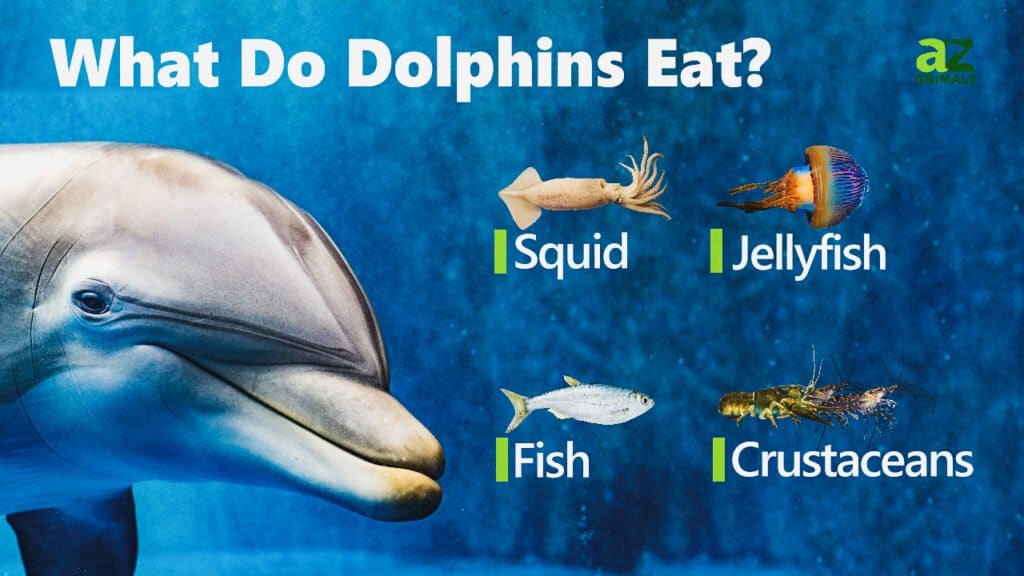
These animals mainly eat fish, squid, and ocean invertebrates. They may also opportunistically feed on small birds or mammals. For a more complete list of foods dolphins eat, check out our “What Do Dolphins Eat?” page.
Predators and Threats

Orcas, dolphins’ largest cousins, are also known to hunt them
©slowmotiongli/Shutterstock.com
Adults have few predators. Their primary threat is humans. Many die each year after becoming entangled in fishing nets.
What Eats Dolphins?
Sharks and orcas may opportunistically prey on juveniles.
Reproduction, Babies, and Lifespan
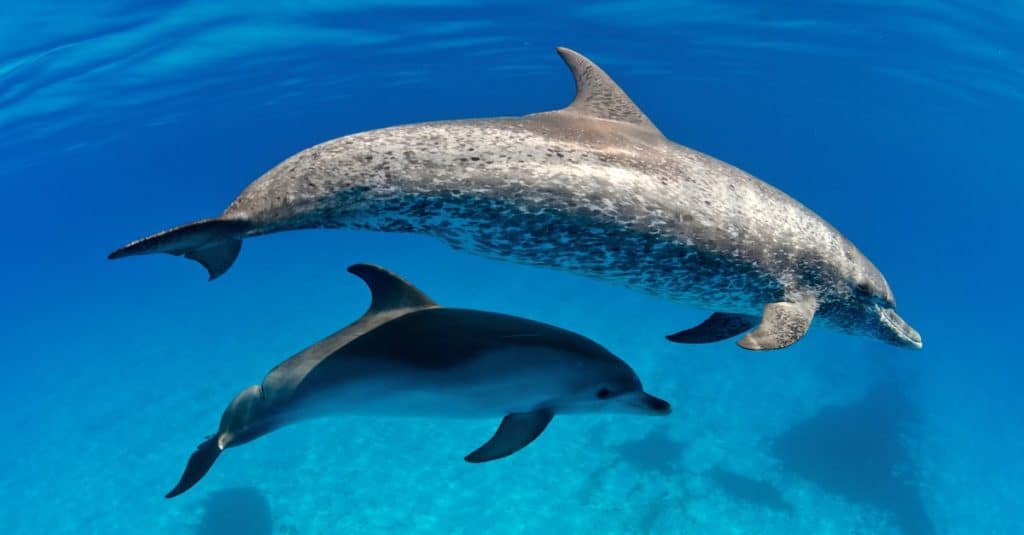
Although dolphins usually give birth to a single infant, they have also been known to give birth to twins and triplets
©Joost van Uffelen/Shutterstock.com
These animals typically give birth to just one offspring, but twins and triplets have been observed. The infant feeds on milk, and the mothers train and care for their babies for several years. Dolphins typically live 10-20 years in the wild.
Intelligence

Dolphins have larger brains than humans and are considered to be one of the most intelligent species on the planet
©Willyam Bradberry/Shutterstock.com
Dolphins have brains that are larger than human brains and are among the most intelligent species on Earth. They possess surprisingly complex communication. Yet, they’re not as smart as humans. What are the key differences between human brains and dolphin brains? One difference is that dolphin brains have a relatively small prefrontal cortex and a smaller hippocampus. These smaller areas on the brain lead to dolphins having less higher-level thinking and memory when compared to humans. Yet, dolphins are still perhaps the second most intelligent species on Earth.
Population

Generally, the future looks bright for dolphins population-wise, except for the Irrawaddy which is endangered
©iStock.com/lennjo
The most common species number into the hundreds of thousands or even millions. The most endangered species, the Irrawaddy dolphin, has only 92 known individuals.
Read about the world’s dolphin population.
View all 110 animals that start with DDolphin FAQs (Frequently Asked Questions)
Dolphins vs Whales
Dolphins belong to the same Order as whales, which is Cetacea. Dolphins are generally different than whales in some key ways. First, they’re generally smaller than whales. Second, dolphins live in pods that are generally much larger.
Are Dolphins herbivores, carnivores, or omnivores?
Dolphins are Carnivores, meaning they eat other animals.
What Kingdom do Dolphins belong to?
Dolphins belong to the Kingdom Animalia.
What class do Dolphins belong to?
Dolphins belong to the class Mammalia.
What phylum to Dolphins belong to?
Dolphins belong to the phylum Chordata.
What family do Dolphins belong to?
Dolphins belong to the family Delphinidae.
What order do Dolphins belong to?
Dolphins belong to the order Cetacean.
What type of covering do Dolphins have?
Dolphins are covered in smooth skin.
In what type of habitat do Dolphins live?
Dolphins live in temperate coastal waters, harbors, and bays.
What is the main prey for Dolphins?
Dolphins prey on fish, crab, and squid.
What are some predators of Dolphins?
Predators of Dolphins include humans, sharks, and killer whales.
What are some distinguishing features of Dolphins?
Dolphins have rounded dorsal fins and striped skin.
How many babies do Dolphins have?
The average number of babies a Dolphin has is 1.
What is an interesting fact about Dolphins?
Dolphins can reach speeds of up to 25 mph!
What is the lifespan of a Dolphin?
Dolphins can live for 20 to 45 years.
How fast is a Dolphin?
A Dolphin can travel at speeds of up to 25 miles per hour.
Is a Dolphin a Fish?
No, a dolphin is not a fish. Dolphins and fish do share some characteristics – both are aquatic, living in the ocean. Both have fins and a similar body pattern. But there are key differences. Dolphins are warm-blooded; fish are not. Dolphins have rubbery skin, while fish are covered in scales. Most fish lay eggs, but dolphins are mammals, giving birth to live young. They nurture their young for a long time, feeding baby dolphins with milk.
Do Dolphins Kill Humans?
Dolphins do not hunt humans – that is, they do not see humans as prey or a food source. They do not eat humans. But dolphins are large, strong animals that will defend themselves if they feel threatened. This can result in death to humans by drowning or injury.
One example was reported by National Geographic in 1994. A dolphin rammed two men in Brazil, striking them with its snout at a high rate of speed. One of the men succumbed to internal injuries.
What Does a Dolphin Eat?
Dolphin diets consist mostly of fish, squid, and crustaceans, including shrimp and other marine invertebrates. Uncommon foods include small mammals such as seals or birds such as penguins.
How to say Dolphin in ...
Thank you for reading! Have some feedback for us? Contact the AZ Animals editorial team.
Sources
- David Burnie, Dorling Kindersley (2011) Animal, The Definitive Visual Guide To The World's Wildlife
- Tom Jackson, Lorenz Books (2007) The World Encyclopedia Of Animals
- David Burnie, Kingfisher (2011) The Kingfisher Animal Encyclopedia
- Richard Mackay, University of California Press (2009) The Atlas Of Endangered Species
- David Burnie, Dorling Kindersley (2008) Illustrated Encyclopedia Of Animals
- Dorling Kindersley (2006) Dorling Kindersley Encyclopedia Of Animals
- David W. Macdonald, Oxford University Press (2010) The Encyclopedia Of Mammals

